The Fuji X10 Review:
I always had a good appreciation, and respect for Fuji products, especially back in the film days with their wonderful Velvia, Provia, and Reala films. When photography went digital, I must admit, all I ever heard about were the typical big companies like Nikon and Canon. Then Fuji announced their X100, and things completely changed. Here was a camera that was solidly built, produced phenomenal image quality, and offered rangefinder-like usability all for almost half the price of the Leica X1. Naturally, the Fuji X100 was a huge hit, and I believe that it really help put Fuji on the map again. In fact, it’s still a huge success even with the release of the Fuji X-Pro1 and it’s newly released competitor, the Leica X2. Instead of letting the success of the X100 dwindle, Fuji decided to invest in the X Series cameras, and announced the Fuji X10 in September.
At first, I wasn’t too excited about the Fuji X10. When I first heard the announcement, I was thinking to myself, “here we go again, another high end point and shoot with a small sensor”. While the X10 might produce good images, I thought that it would probably have all of the same problems inherent with a typical small sensor design, such as, grainy images, blown out highlights, lower dynamic range, and the inability to create a super shallow depth of field. I figured that the performance was similar to something like a Panasonic LX5 or an Olympus XZ-1. Don’t get me wrong. These types of cameras are great in their respective class. It’s just that there are some compromises because of their small sensor designs but people learn to deal, and accept them for the sake of portability.
So why am I reviewing the Fuji X10 now? Well, I was at Bergen County Camera picking up my XF 60mm F2.4 R Macro lens, and I saw the X10 sitting on one of the shelves. I might not have been too excited about it when the X10 was release but come on, I’m like a kid in a candy store when I’m in a camera shop :). Bob, the co-owner, saw me looking at it, so he took out the X10 to let me play with it. My first impressions were that this was not your typical high end point and shoot camera. I was definitely feeling that camera lust growing inside of me :). The X10 really felt like something special…something different than the rest. I quickly asked him if I could borrow the camera, and he was nice enough to say yes. I jumped on the opportunity, and I’m glad I did because the Fuji X10 is one amazing little camera.
Fuji X10 Build Quality:
Yes, the Fuji X10 is one amazing camera but let’s start with discussing the build quality. First off, the X10 is one classy looking camera, and believe me, it only looks better in person. It really does look like a miniature rangefinder rather than your typical point and shoot. But this camera is not only about looks. Like the rest of the X Series cameras, the Fuji X10 is an extremely solid product. No creaks, no rattles, and absolutely no signs of inferior workmanship. Yes, the price for the Fuji X10 is $599 but in my opinion, it is worth every penny because the build quality is really impeccable. It comes with real strap lugs, a metal lens cap, and almost every part of the X10 is made out of solid metal with the top, and base made from die-cast magnesium. In my opinion, this camera feels more solid than many of its competitors, such as, my recently sold Leica D-Lux 4.
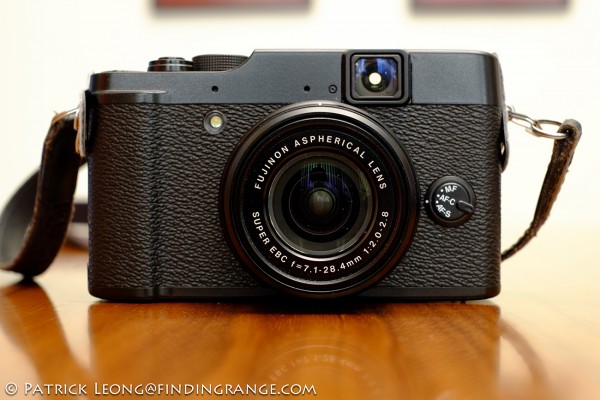
↑ The front view of the Fuji X10.

↑ The back view of the Fuji X10.
Fuji X10 Handling And Performance:
Not only are the looks, and build quality fantastic, the feel of the X10 is great as well. Yes, the Fuji X10 is a point and shoot compact camera. But if this camera had anything to say about it, I don’t believe that it thinks it’s just a point and shoot :). In fact, in this category of camera, I would argue that the Fuji X10 probably gives you the most “real camera” feel and control. In many way, I felt like I was using a mini X100. All of the controls, and aluminum knobs, such as, the exposure compensation controls are designed with photographers in mind. The X10 can definitely be used completely automatically if one chooses but it just screams to be used manually. The Fuji X10 invites you to take control, and actually have a say in your photograph. The autofocus is quick and very precise even in darker conditions. The metering is also very accurate. The slight bump for the hand grip offers excellent support, and since the zoom, and the on/off works manually by twisting the lens, you always end up placing your other hand on the lens, therefore, holding the Fuji X10 like a real camera. I seriously love using this camera, and a lot of it is because I don’t feel like I’m just lugging around another point and shoot.
↑ The Fuji X10 has the same signature look as the X100 and X-Pro1.
Fuji X10 Manual Zoom Ring Feature:
Since I just mentioned the manual zoom ring feature, I might as well dive deeper into the topic now. At first, I had my doubts about the manual zoom ring on the Fuji X10 and I’m sure there are many who felt the same way. But after using the manual zoom, I love it, and I can’t understand why it’s not implemented more in other manufacturers’ cameras. It’s so easy to use, it’s such a simple solution, and it works so fast. The zoom range is a 28mm to 112mm equivalent, and It works wonderfully. The lens is fast as well with a wide open aperture ranging from F2.0 to F2.8. The manual zoom ring is much more precise than motorized versions from other camera manufacturers, and it’s also a lot easier to control. Also, since it’s manual, it can be operated rather quickly as I said before. The manual zoom feature makes you feel more connected to the camera, which is another reason for why the Fuji X10 feels more like a “real camera” rather than just another high end point and shoot.

↑ The Fuji X10 with the manual zoom ring set to ‘off’.
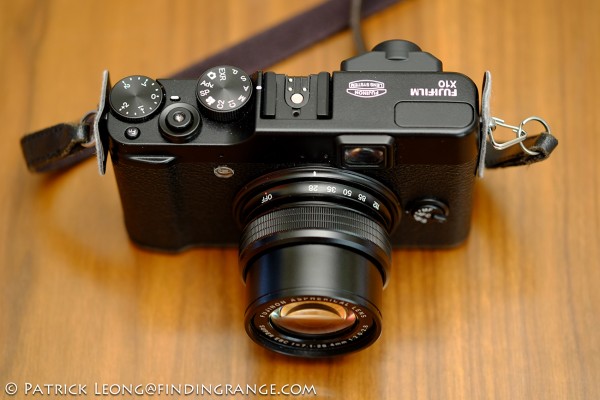
↑ The Fuji X10 with the manual zoom ring set to ’28mm’.

↑ The Fuji X10 with the manual zoom ring set to ‘112mm’.
Fuji X10 Viewfinder:
What makes the Fuji X10 even more great is that not only did Fuji put an optical viewfinder into the X10, they integrated it in very nicely. The viewfinder (only 85% coverage) does not look like an afterthought. Even though the X10 is just a high end compact camera, Fuji really tried to appeal to the photographer, and we should all give Fuji credit for that. But how does it really work in real world situations? Well, the viewfinder is bright, which is always nice, and your view actually zooms when you zoom the lens, which is a great thing. However, after playing around with the viewfinder a bit, I resorted to using the back LCD screen for most of my shooting.
Right now, you’re all probably cursing me for choosing to use the back LCD screen instead of the viewfinder but in truth, while I give Fuji credit for putting a viewfinder in the Fuji X10, it just doesn’t work as well as I had hoped it would. First off, there is no information in the viewfinder. Yes, you can argue that people who use rangefinders often use external viewfinders that have no information in it but there isn’t even a center rectangle to tell me where my focus point is at.
Also, let me ask you all something. What is it that we all love about rangefinders? What is one of the key points that separates rangefinders from DSLR’s? Rangefinders all have nice, bright, big, open viewfinders. With the Fuji X10, I feel like I’m looking through a tunnel. Everything looks just a bit farther away than you expect it to be. The viewfinder just doesn’t feel as inviting as I thought that it would.
But, we have to keep things in perspective here. Don’t forget, the Fuji X10 is designed to be a high end point and shoot, not a mirrorless or a rangefinder. Furthermore, if they made the viewfinder anymore hi-tech, it would probably shoot the price up. Lastly, at least this camera comes with a viewfinder. It comes with one that can also zoom. An external viewfinder for a Leica D-Lux costs around $300 plus it only has one focal length, and it’s external. So again, Fuji should definitely be given credit for putting an optical viewfinder into it’s X10 in the first place, especially since there are many cameras in this class that do not even have a intergrated viewfinder.
Fuji X10 Image Quality:
Enough about the build quality, and handling. Let’s jump straight into the most important topic: image quality. I think that this class of compact cameras are nice to have because while they might not fit in your pocket as well as the average consumer point and shoot, they do offer much better image quality, build quality, and very often, RAW capability. Cameras like the Fuji X10 are great because sometimes you just don’t want to lug around your main camera system but you still want decent image quality.

↑ There’s always plenty of taxis here in New York.
The problem with high end compact cameras is that while the sensor is bigger than your average point and shoot consumer camera, you’re still dealing with a small sensor. Bigger sensors are usually favored because they offer things like better dynamic range, and better high ISO capability in general but of course there are acceptions to the rule just like anything else. The problem is that bigger sensors usually require bigger camera bodies, just like faster lenses usually are much larger than their slower counterparts.
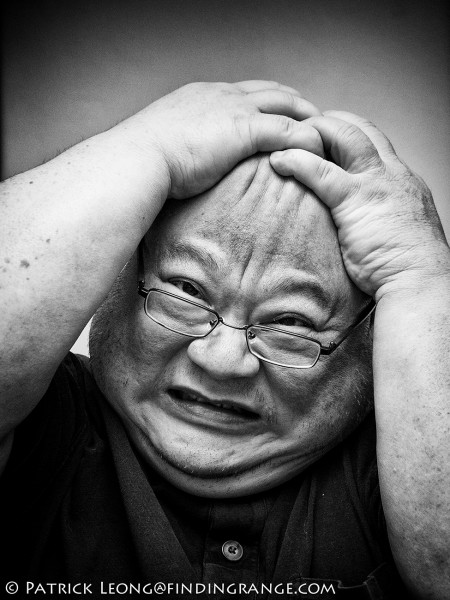
↑ Here’s a photo of my uncle messing around :). This is one of my favorite photos, and it was taken with the Fuji x10.
As I said before, I was expecting the Fuji X10 to be just like any other high end compact, such as, Leica D-Lux but WOW, was I completely surprised! The image quality is phenomenal for a camera in this class. I’ve seen other reviews by established magazines saying that the X10 can rival many DSLR’s on the market today, and honestly, it’s hard to disagree with that after using the Fuji X10. I can honestly tell you that I’ve never felt like I needed more while I was using the X10. If there are any doubts, I suggest you try one out at a camera store or rent an X10. Image quality from this little point and shoot is simply superb, and it seriously breaks the mold on what a camera in this class should be like. In my opinion, the Fuji X10 is the new king in the high end point and shoot category.

↑ The Fuji X10 is small and inconspicuous. It’s great for street shooting. Images are also very clear, and have a nice pop to them.
A lot of this fantastic image quality comes straight from the sensor that Fuji has chosen for their X10. With it’s 2/3 inch 12 megapixel CMOS sensor, colors from the Fuji X10 are beautiful, crisp, and lifelike with dynamic range equally as impressive, especially for a camera in this class. In fact, the X10 has one of the biggest if not the biggest sensor in its class. I was afraid that I wasn’t going to give the Fuji X10 a fair review because the whole week I had it, it was raining, and the lighting was really flat. But contrast is excellent with the X10 even under the flat lighting conditions that I was shooting in. Images also have that three-dimensional pop usually associated with more expensive cameras.

↑ The Fuji X10 produces nice colors just like its bigger siblings, the X100 and the X-Pro1.
The only issue that some may have with this camera is that the depth of field is a bit large. In other words, for shallow depth of field junkies, I’m sorry to say that you won’t be getting much from the Fuji X10. The sensor, while big for a camera in this class, is still relatively small when compared to a full frame sensor or even a APS-C sensor. Also, while the lens is fast, it’s just not fast enough when combined with the sensor limitation to give you bokeh like say a 50 Summilux ASPH.

↑ I think that this photo is kind of cool. This photo was taken in City Hall at night.
The Fuji X10 is not about crazy bokeh. It’s about giving you super sharp images with beautiful color, and contrast all in one small package. You can’t really fault the X10 because it’s the design limitation of high end compacts that prevents one from achieving that really shallow depth of field. There are limitations if you want something really portable and small. Other than the shallow depth of field issue, the X10 image quality is top notch, and if you’re looking for a high end compact that has the same character as the X-Pro1 or X100, than the X10 is it. To me, the Fuji X10 definitely has the same signature look as the X100, and X-Pro1 but what so great about the X10 is that you can get that look in a miniature sized package.
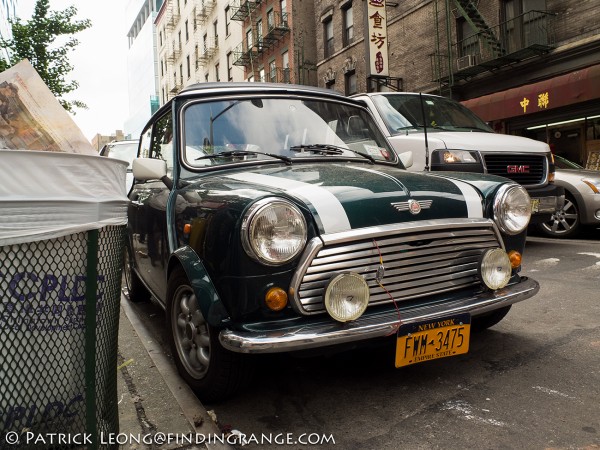
↑ I love the original Mini Cooper. Small and unassuming but can definitely give others a run for your money. It reminds me of the Fuji X10 :).
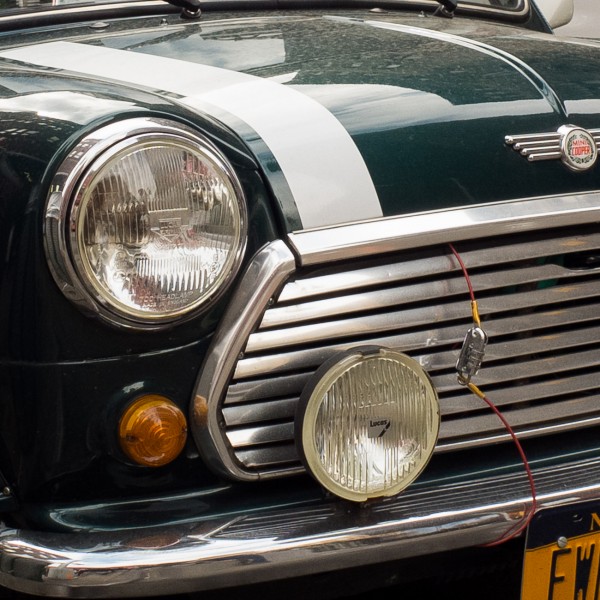
↑ 100% crop of the photo above. You can even read the name Lucas on the bottom light.
Fuji X10 High ISO:
So, the build quality is great, the image quality is superb…how will the high ISO capability be for the Fuji X10? Well, many might believe that image quality on the X10 is only great at normal ISO speeds, and will suffer greatly once the ISO goes up. This makes sense because this class of camera usually has small sensors that produce poor high ISO images. I was guilty of this belief. I made a huge effort when I had my D-Lux 4 to not shoot above 400 ISO. Again, I wasn’t expecting much from the Fuji X10 because I thought that it would just be like any other high end point and shoot. It’s in the same class, right? Surely, the X10 has to be similar to its rivals. Boy, was I wrong.

↑ This image was taken at 1000 ISO.
High ISO is brilliant on the Fuji X10. Image noise is controlled very well even up to speeds of 3200 ISO. It’s practically noise free from 100 to 800 ISO, and images show only a slight bit of noise and color desaturation at 1600 ISO. More noise is visible at 3200 ISO but for a camera in this class, it’s completely perfectly acceptable. If you must use the resolution reducing setting of 6400 ISO, it is still acceptable. The main point that I want to get across is that the entire range of 100 to 3200 ISO is completely useable, and you should feel free doing so. Just like its older siblings, the X100, and the X-Pro1, the Fuji X10 is a high ISO killer.
↑ Here is an image shot at 3200 ISO.
↑ Here is a 100% crop of the photo above.
When I was walking around with the Fuji X10, I felt completely free to crank up the ISO without any negative effects. Even when I had to return the X10 to Bergen County Camera, I still couldn’t wrap my head around how good the high ISO is on the X10. I can’t believe that this little camera can produce images like this. It definitely blows away my old Leica D-Lux 4, and the newer D-Lux 5 by a large margin. At times, I felt like I was using my Fuji X-Pro1 because the high ISO capability is so good! Check out the photo, and gallery below to see the ISO capability of the Fuji X10.
↑ You can check out the gallery to see the 100% crops of the photo above ranging from 100 to 12,800 ISO. Images above 3200 ISO are resolution reduced by the camera. Info about what ISO was used is found on the bottom left hand corner of each image.
Fuji X10 Macro Mode:
The Fuji X10 also has macro mode, and something that they call super macro mode. The macro mode is great but the super macro mode will let you get pretty close to your subject. The macro mode on the X10 definitely helps make the camera more versatile, and even more of a reason to love this camera.

↑ The Fuji X10 does produce nice bokeh but you have to get pretty close.
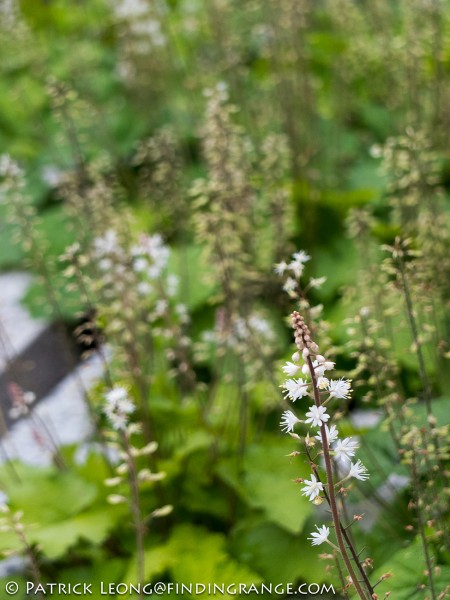
↑ Here’s another macro shot by the Fuji X10. The bokeh isn’t bad at all, and part of that is thanks to the seven aperture blades.
Fuji X10 Film Simulation:
For those who prefer not to shoot in RAW with your Fuji X10, you can choose from eight different types of film simulation modes. Some may not like the Velvia mode on the X10 because of its vividness but I love it. Here are examples of each:
↑ Fuji X10 film simulation modes.
Fuji X10 Issues:
As you probably realized by now, I love the Fuji X10. If I had to design a high end compact, the X10 is pretty much what I would make. However, just like any other camera, there are a couple of issues (it was actually very hard to think of any) that I should mention. One main issue that I’ve already mentioned is that I’m not too fond of the optical viewfinder. I congratulate, and praise Fuji for putting one into the X10 but the viewfinder is not inviting. It also has no relevant information, there’s a bit of tunnel vision to it, and it would be nice if the viewfinder had a focus point.
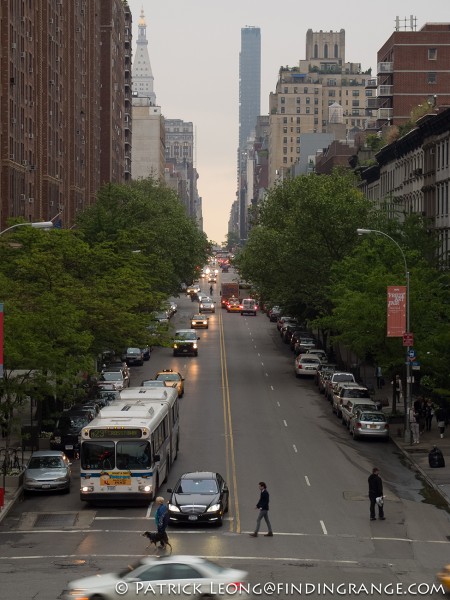
↑ Here I am looking down 23rd St. in Manhattan on a gloomy day.
The other complaint that a few owners have had with their Fuji X10 is the orb issue but honestly, it doesn’t seem like a huge problem to me. I feel that it’s been blown out of proportion a bit, especially since the X10 itself is so good. I’ve seen some examples online, and the truth is if this is the only issue with the X10, it definitely won’t stop me from buying one. There are other digital cameras that can produce similar blooming results depending on the lighting situations. Plus, if it does occur, it occurs only on rare instances. Lastly, for cameras that are effected by this, Fuji will be replace those sensors with a modified one.
Pro’s And Con’s of the Fuji X10:
Here’s a quick summary of the pro’s and con’s of the Fuji X10:
Pro’s of the Fuji X10:
- Build quality is superb.
- Metal lens cap.
- Great classy look.
- looks, and feels like a camera made for a photographer rather than a point and shoot.
- Great controls.
- Beautiful images that offer excellent constrast, color, sharpness, and three dimensional pop.
- One of the biggest if not the biggest sensors in its class.
- Fast F2.0 to 2.8 lens.
- Zoom range is pretty decent (28mm-112mm equivalent).
- Integrated optical viewfinder that zooms.
- Manual zoom feature.
- High ISO is fantastic.
- Film simulation modes are great.
- Images have the same signature look as the X10’s bigger siblings, the X-Pro1, and the X100.
Con’s of the Fuji X10:
- Viewfinder has no information, and there is no focus point.
- On rare instances, some have reported an orb issue with their X10.
- A bit hard to achieve really shallow depth of field.
Fuji X10 Final Thoughts:
I absolutely loved using the Fuji X10, and I was a bit sad to see it go back to Bergen County Camera. I almost bought the one that was loan to me, and that’s saying a lot since I’m actually saving my money for something else, and I promised myself that I would be good :). The X10 single handedly change my perception of what a high end point and shoot camera can achieve. I would even go so far as to argue that the Fuji X10 is THE camera to beat in the high end compact category. No longer will I ever judge a book by its cover :).
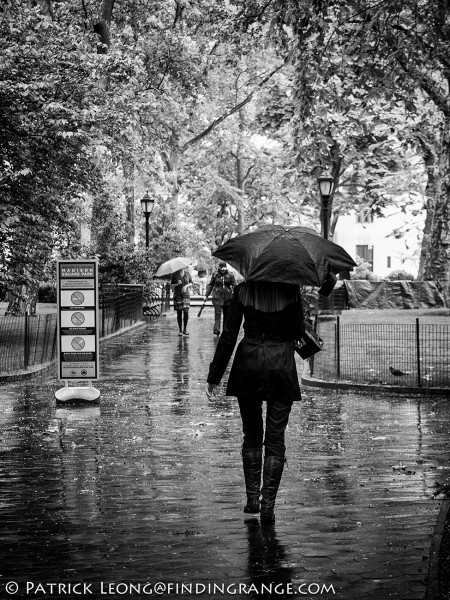
↑ Here is another shot with the Fuji X10 that I converted to black and white using Nik Software Silver Efex Pro 2.
Am I crazy? How is the Fuji X10 the camera to beat? The X10 just draws you in with its good looks, and build quality. Then the X10 impresses with a signature look that’s similar to both the X100 and the X-Pro1. Seriously, if you love the X100 or the X-Pro1, then this is THE high end point and shoot camera for you. You will love it. End of story. Color, contrast, and sharpness are outstanding for a camera in this class. Yes, the viewfinder is not exactly up to what I want, and some on a rare occasion have mentioned orbing issues but the overall package is excellent. I myself have not experienced ANY problems whatsoever with the Fuji X10 for the time that I’ve had it to review.

↑ The Fuji X10 makes a great street camera because it’s small, discreet, and image quality is top notch. People also aren’t as intimated by the X10 because to some, it’s just a small point and shoot.
For the asking price of $599, you can buy many different types of cameras ranging from a good point and shoot to a mirrorless interchangeable camera. You can even buy an entry level DSLR. In terms of the point and shoot category, in my opinion, the Fuji X10 wins hands down. I don’t think that there is anything else out there that can deliver the same combination of sharpness, color, contrast, high ISO capability, usability, and form factor as well as the Fuji. Others may disagree but this is a user review, and this is my opinion. I wholeheartedly believe that the Fuji X10 is really that good. If I was in the market for a high end point and shoot, I would not need to consider any other camera because this would be the one. There were so many times when I was saying to myself, “why do I even need a Fuji X-Pro1 or even a Leica M9?” 🙂 The Fuji X10 is such a great camera to carry around all day, and its so small yet so capable. Seriously, this camera was SUCH a joy to use!

↑ Here is a shot that I took on the High Line.
But how does it compare to a interchangeable mirrorless camera? For the price of $599, you’re not only in the middle of the high end point and shoot category, you’re also getting into the interchangeable mirrorless territory. Well, I believe it’s really up to you on what camera to get, and what your needs are. Yes, there is more flexibility with a interchangeable mirrorless camera, such as, an Olympus E-PL3, and there are mirrorless cameras that offer better image quality than the X10. Some mirrorless cameras even have APS-C sized sensors in them, which are the same size sensors as some high end DSLR’s. But I really believe that the Fuji X10 can hold its own.
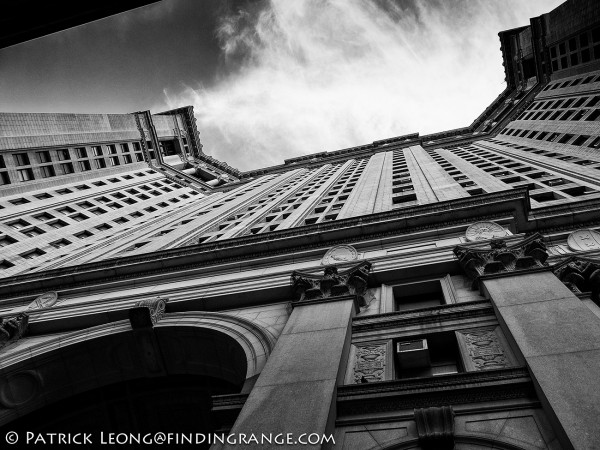
↑ This was taken somewhere in City Hall, and converted to black and white using Nik Software Silver Efex Pro 2.
First off, no matter how small an interchangeable mirrorless camera can get, the Fuji X10 is still smaller, and it’s designed for people who want great images but want to carry as little as possible. It’s designed for someone who is looking for an all in one camera but doesn’t want to sacrifice too much in terms of image quality. This high end point and shoot camera is great for people who want to enjoy their vacation with their loved ones without fiddling with a whole bunch of equipment. This is where the high end compact cameras, and this Fuji excels.
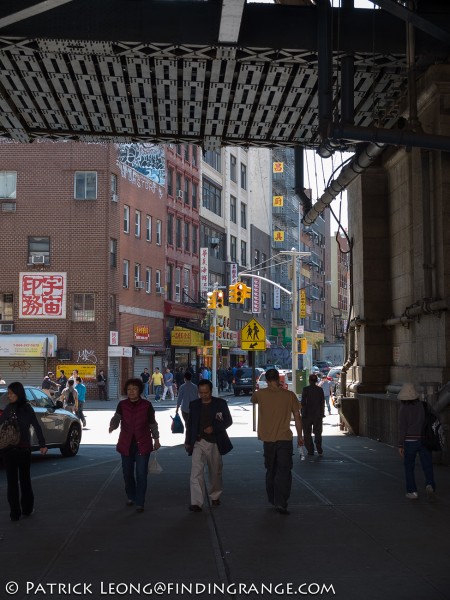
In my opinion, the Fuji X10 changed the game in this category of camera, and it rocked the high end compact world. Not only is image quality fantastic, the usability and the manual features inherent in this camera make buying this high end point and shoot even more of a real alternative to a mirrorless camera if you do not want or need interchangeable lenses. In my opinion, the Fuji X10 is a steal for $599. I always thought that high end compact cameras were good but were plagued with high ISO noise, low dynamic range, and overall lower image quality. It’s physics, right? If you want a small camera, you can’t fit a big sensor in it. If you have a small sensor, image quality will suffer. But try telling that to Fuji because they broke the rules when they created the X10.
Thanks for taking the time out to read my review on the Fuji X10. Please feel free to leave a comment! I hope you all enjoyed it!
I want to thank Bob at Bergen County Camera for lending me the Fuji X10 to review. I don’t get paid for saying this but Bergen County Camera is one of the best camera stores, and they’re separated from the rest because they offer the most personal service available. Bob does get in mint condition X10 users, and demos periodically if interested. He also sells new ones too. Give him a call (201)-664-4113, and tell him I sent you. He will take care of you.


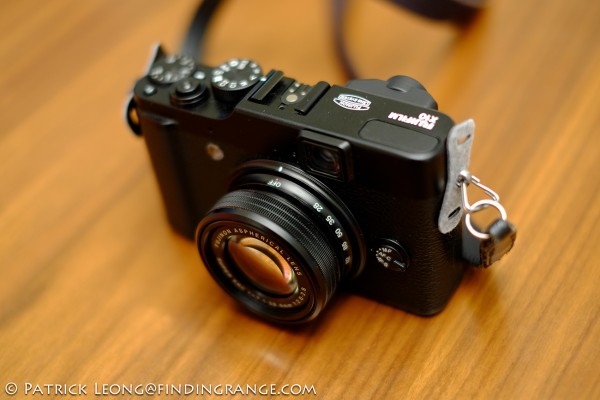
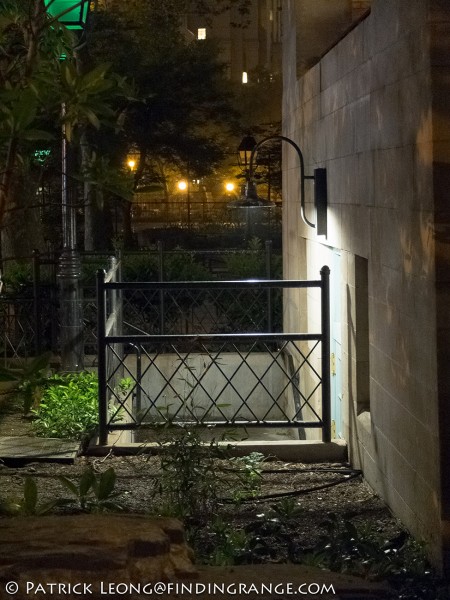
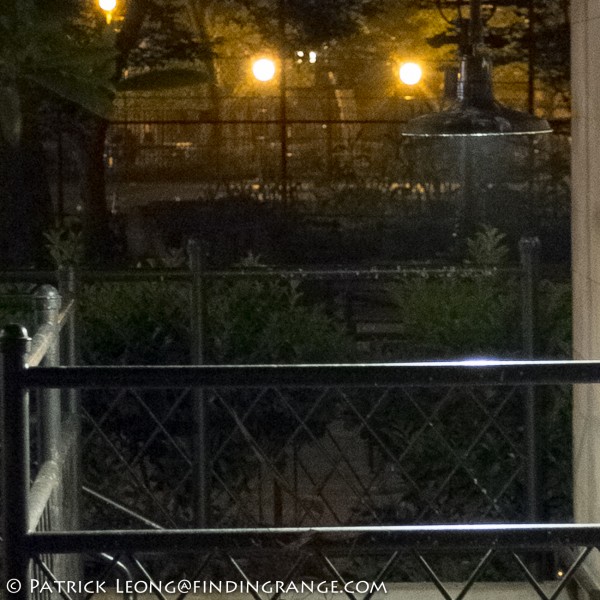










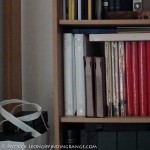















I
have bookmarked your site as I feel we are like minded as regards Fuji
cameras, I own a Nikon system built around a D90, it used to run from a
10-20 Sigma to a 150-500 Sigma but my son dropped hints about what he
would like camera wise so I found him a D60 and gave him most of my gear
but I could not part with the D90 or 16-85 nikon and 80-400 nikon which
I kept because he tends to damage things and the thought of him with my
cameras makes me cringe. Between me letting him have my gear I bought a
X10 Fuji with the intention of just owning one camera and I love it,
when I use the D90 I nearly always use the 16-85 nikon, the X10 is
almost the same focal length and the quality, very good, my thoughts
now are will I buy a XE1 and 18-55 fuji lens and relent and let my son have all my Nikon gear, I think because of the quality of the X10 I will now be a Fuji Man , I also think a lot more people will be going the same way, what else will be coming our way from Fuji over the next few years. Thank you for a really interesting site, I shall be an avid reader from now on.
Hi Bob,
Thank you so much for your kind words and support! It is great to have you here, and it is great to know another person who feels the same about the Fuji system. You’re a nice dad, and kind of remind me of my own. My dad ended up giving me a lot of his old equipment before, and I still use a lot of it today. It’s a great thing, and I’m sure your son will do some awesome things with it all.
The quality of the X10 is great, and the X-E1 is definitely a great camera to consider. I don’t get paid by Fuji or anything but I must admit that I have definitely been loving the Fuji stuff more and more. The X-Pro1, especially with the XF 35mm is one awesome combo that is, IMO, extremely hard to beat. Judging by how the X-E1 has the same exact sensor, it will probably be one amazing camera. You really get a lot of punch for the money. I’m actually selling my X100 to purchase the X-E1 with the 18-55mm, and I will definitely be reviewing both here. My dad has been eyeing my X-Pro1 for quite some time, and I think I might be lending it to him “indefinitely” :). Who knows lol.
Fuji is also pretty awesome as a company. I really love how they always keep up with firmware updates, and stuff like that. Plus, if you like how your X10 has been treating you, I’m almost positive that you will be amazed at the results from the X-E1. Please keep me updated, and tell me what you think of it if you buy it. Thanks again for your nice comments. It’s great to have visitors like you, and I’m very glad you’ll be back! Take care, and feel free to comment back whenever!
Beautiful review. I mean beautiful photos. I especcialy like the ones with the evening feel on the street from above 🙂
I liked the photos from this review the most from all the Fuji camera reviews on this site.
Do You still have the camera?
How do You like it with the new firmware update? 🙂
HI Tenisd,
Thanks for the comment! It’s much appreciated, and I’m glad you liked it! Unfortunately, I only had the camera for a few weeks so I never had the chance to try out the new firmware update. It was loaned to me by Bergen County Camera to write a user review. But I would imagine some of the new features to be pretty awesome :). I really liked the X10. Do you have one?
thanks for writing this. i’m by no means a photographer and i swear by my point and shoot, but i wanted nicer pictures and the lumix fh2 that i got took pictures that were substandard (i was using a canon point and shoot which got stolen in the airport. i was very happy with my canon.) i knew i would never venture out into the DSLR category so i seriously considered the olympus pen which was (1) pretty and (2) allegedly took great pictures. it was, however, too expensive for me.
my cousin told me to get the x10 (he was also getting one for himself) and i had gotten it already, but didn’t really know how to use it to take amazing pics. so that’s how i found myself here.
so while i may not be the target market for your write-up (as i had bought the camera already), i am glad to have read your glowing words. i think i’m exactly the target market of the fuji x10!
Hi Rosa,
Thanks for your comment! Sorry to hear about your camera being stolen. Whether you’re my target market or not, I’m glad you came by, and I appreciate you taking the time out to read whatever I have here!
The X10 is a great little camera, and I meant every word. The X10 has amazing potential, and with some of the images that it can produce, I seriously wonder why anyone would really need to carry a big DSLR around for their daily shooting. It’s funny because my brother in-law met this concert photographer who was shooting with his usual two DSLR setup. They got to talking, and you know what he uses on his own time?: A Fuji X10. I only wished I had more time with the camera (I think it was raining pretty much the whole week I had it).
Congratulations on your new purchase, and I hope you enjoy it! Feel free to come back if you want to share your experiences with the X10. Take care!
Patrick
Hi Patrick,
Best review of the X10 I saw. Why? Some reviewers talk about the great image quality and then show rather soft looking images suggesting a lack of detail. Your pics are great and do the camera justice and show what pics can be made with the X10 files. I am converted, thanks.
Late question; do you remember the settings for you black and whites? Was it on the 6MP dynamic range setting (or whatever) or on 12 MP standard setting. I checked the exif and assume it is 12MP but I am not sure about the MP count because of the X10’s special sensor.
Thanks again for a great review, Alwin
Hi Alwin,
Thank you so much for the kind words! I really did enjoy my time with the X10. It’s such a great little camera. Too bad the weather was really bad during the time that I had it.
To answer your question, all the photos were shot with the standard 12mp setting. All the black and white images were made with Nik Software.
Again, thanks for your comment. I really appreciate you taking the time out to read my review! I hope to hear from you soon!
Take care,
Patrick
Many thanks for various other impressive submit. In which else might any person wardrobe kind of details ordinary great way with words? I’ve got a business presentation in a month’s time, using this program . on the hunt for this kind of info.
Thanks! I appreciate you taking the time out to read it! The X10 is a great camera. I hope my review helped you.
All the best!
Patrick
Good review and great images.
Do you shoot in raw and convert to jpg outside the camera?
I have had 5 med format Fuji film cameras in the past and love the lenses. I am looking for a used X10 to buy – I’m on a budget.
Thanks and best regards, John
Thanks John!
I appreciate you taking the time to read it! Yes, with a few exceptions, I usually shoot in raw and then convert them into jpegs. I’ve always wanted to purchase one of those medium format film cameras by Fuji :). Those are great cameras. If you have any other questions, please let me know,
Best regards,
Patrick
Here I am, 8 years after this review and I find it very useful! I found a brand new X10, sealed box, for 220 usd so I decided to buy it, despite being an 9 years old camera.
I think I’ll like it.
Hi Fabio,
Thanks for the very kind words! I’m glad it helped! Congrats on the camera. Glad you were able to find a sealed box! Let me know what you think of it, once you’ve had some time to shoot with it. I hope you enjoy it!
Best,
Patrick
Hi Patrick! The camera arrived and it’s fantastic! Built like a tank, great image quality, colors and features. It’s my first Fuji camera and I think I’ll stick to the brand. My only complain is, coming from DSLRs, the high ISO noise. But, for the sensor size I think it’s acceptable. Do you think the X100 / X100T or X100S is a worth upgrade?
Hi Fabio,
Good to hear from you, and glad you like the camera!
For its sensor size, it is definitely acceptable. If you do plan to upgrade to one of the X100 cameras, you will definitely see big improvements all around. So, it is definitely worth the upgrade. The X100 series is one of my favorites. I am currently reviewing the X100V (reviewing coming soon), and it has been fantastic so far. If you have any other questions, feel free to ask!
Best,
Patrick